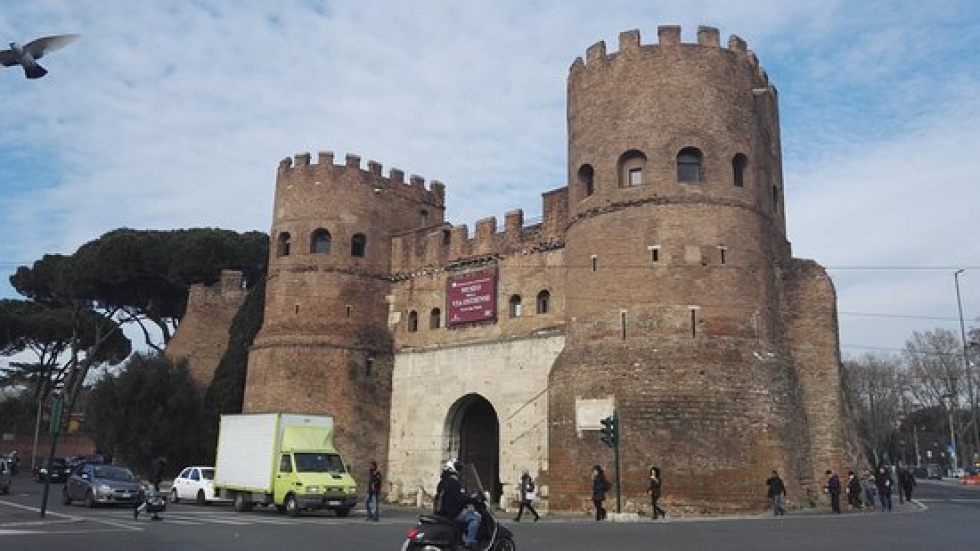- in Roman concrete and covered in splendid marble slabs from the city of Luni. This marvellous funeral monument was committed by Gaius Cestius - praetor and member of an important sacerdotal order - in the second half of the 1st century BC. The pyramid was erected between 18 and 12 BC, year of the death of its customer. The burial chamber has a barrel vault and frescoes on its wall, even if the majority of them has been destroyed. In 271 AD, thanks to its grandness and majesty, the pyramid became a part of the new Aurelian wall, making an extraordinary defensive bastion. An interesting fact: in the first Imperial Age in Rome, and not only there, the new trend of getting buried into a pyramid started to spread, following the Egyptian and Mesopotamian model - both well known by Romans. That is why several pyramids were erected in the city even though nowadays there’s just one left, making it impossible to tell the real number of them. Clearly, only rich and powerful people could afford this luxury. We know for sure that besides Cestius’ Pyramid, there were at least other three. One of them - known by the name of “Meta Romuli” (Romulus’ Grave) – stood in the current “Borgo” district, precisely in Via della Conciliazione, opposed to the Cestius’ one, that since the Medieval Age was known by the name of “Meta Remi” (Remus’ Grave). Pope Alexander VI – the Borgia Pope - ordered the demolition of the pyramid in 1499 AD, to make space for the renovation of the area next to the Vatican due to the upcoming 1500-Jubilee.The other two pyramids - that used to stand in Via Lata (now known as Via del Corso) facing Piazza del Popolo - were removed in the first half of the 17th century – during the Baroque Age – and later replaced by two Baroque churches: Santa Maria in Montesanto and Santa Maria dei Miracoli, wrongly called “the twin churches”.The existence of a unique funeral monument such as the Cestius’ Pyramid, can lead us to a very interesting consideration: Ancient Romans were not only open-minded towards foreign cultures and traditions, but also towards various and different religions, showing a high tolerance that’s hard to find even nowadays. There was just one rule: rites, behaviours, activities and events of any kind couldn’t break the LEX ROMANA.
Giuseppe Rosselli




